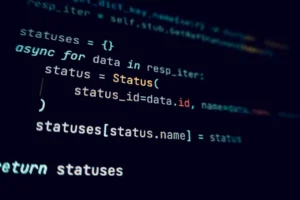Physical Address
304 North Cardinal St.
Dorchester Center, MA 02124
Physical Address
304 North Cardinal St.
Dorchester Center, MA 02124

Data privacy and regulatory compliance have become paramount business concerns in today’s rapidly evolving digital landscape. As organizations collect vast amounts of data, they are subject to a growing list of privacy laws and regulations that govern how this information must be managed, stored, and protected.
From GDPR in Europe to HIPAA in healthcare, failure to comply can result in significant fines, reputational damage, and even legal consequences.
To navigate this complex environment, companies are increasingly turning to cloud architecture, which offers a robust framework for managing data in a secure, scalable, and compliant manner.
If you’re unsure how to adapt your systems, the experts at DoiT provide cloud support and guidance that can likely put you on the right path.
Cloud architecture is the infrastructure in a cloud computing environment comprising elements that comprise the whole system. It is the framework for organizing data and related processes at different organizational locations.
Cloud architecture plays a crucial role in protecting data, and one of these roles is by design allowing data to be partitioned and protected at multiple layers of the architecture, which makes it difficult for the wrong hands to access the data.
Cloud architecture allows sophisticated encryption methods that work on the data at rest and in transit. Encryption converts data into other forms that people in the event cannot understand that unauthorized persons access the data.
New-generation cloud platforms provide data-at-rest encryption where the encryption algorithm is updated to meet the current security standards.
Data in transit, or data moving from one system to another or from one network to another, can also be encrypted using TLS (Transport Layer Security) protocols. This end-to-end encryption guarantees that data of any type is safe before, during, and after processing.
Cloud architecture supports the concept of RBAC, through which data access is granted based on an individual’s role in an organization. This way, access can be separated according to job descriptions, which helps prevent insiders from compromising the company’s data or becoming a target for cybercriminals.
For instance, health information may be available to doctors and nurses but not to receptionists or any other employee in the health facility to meet the HIPAA law on patient information disclosure.
The third main benefit of cloud architecture is the possibility of automating compliance checks. AI and machine learning also allow cloud platforms to constantly observe data usage and storage to conform with the current laws on the subject.
When a violation happens or the system identifies a potential violation, the system can automatically generate notifications to the correct individuals in real time and minimize the impact.
While data privacy is centered around preventing data leakage and unauthorized access, regulatory compliance guarantees that companies conduct themselves legally regarding data.
Cloud architecture is instrumental in helping business organizations implement these regulations as compliance standards evolve to be more stringent in various geographies and business sectors.
Today, one of the problems companies experience is knowing where their data is located and how it is governed if it is shared across borders. A number of nations have enacted data localization policies that demand that certain sorts of data be hosted within the country.
Cloud architecture provides organizations the flexibility of selecting the location of their data so that they can meet data residency requirements. All the major cloud providers bring regional availability, which would enable enterprises to store their data in countries that meet specific regulatory requirements.
Businesses find that cloud platforms can make the compliance audit process more accessible, usually cumbersome. This is because cloud architecture allows reporting tools to run automatically and record and produce logs and reports of how data is stored, retrieved, and processed within the cloud system.
They can also be instrumental when conducting audits where compliance has to be shown. Automated audit trails also assist organizations in conducting searches that may reveal areas that may lead to violations of specific regulations before they occur.
In the same respect, cloud architecture also assists businesses in third-party risk management apart from internal controls. Compliance regulations frequently demand that a business guarantee its vendors and partners adhere to similar data security requirements.
This way, cloud solutions help use third-party services with built-in compliance and make both internal and external data ecosystems compliant with the regulations.
In the age of data protection, it is a never-ending task for any organ organization to achieve compliance and protect data privacy. With the changing legislation and the increasing number and variety of threats, businesses need reliable and versatile information security methods.
Cloud architecture has better security measures, automation characteristics, and elasticity toward data protection and global regulation compliance. With the help of cloud technology, organizations can protect their data and operations, which will prepare them for new requirements and regulations.